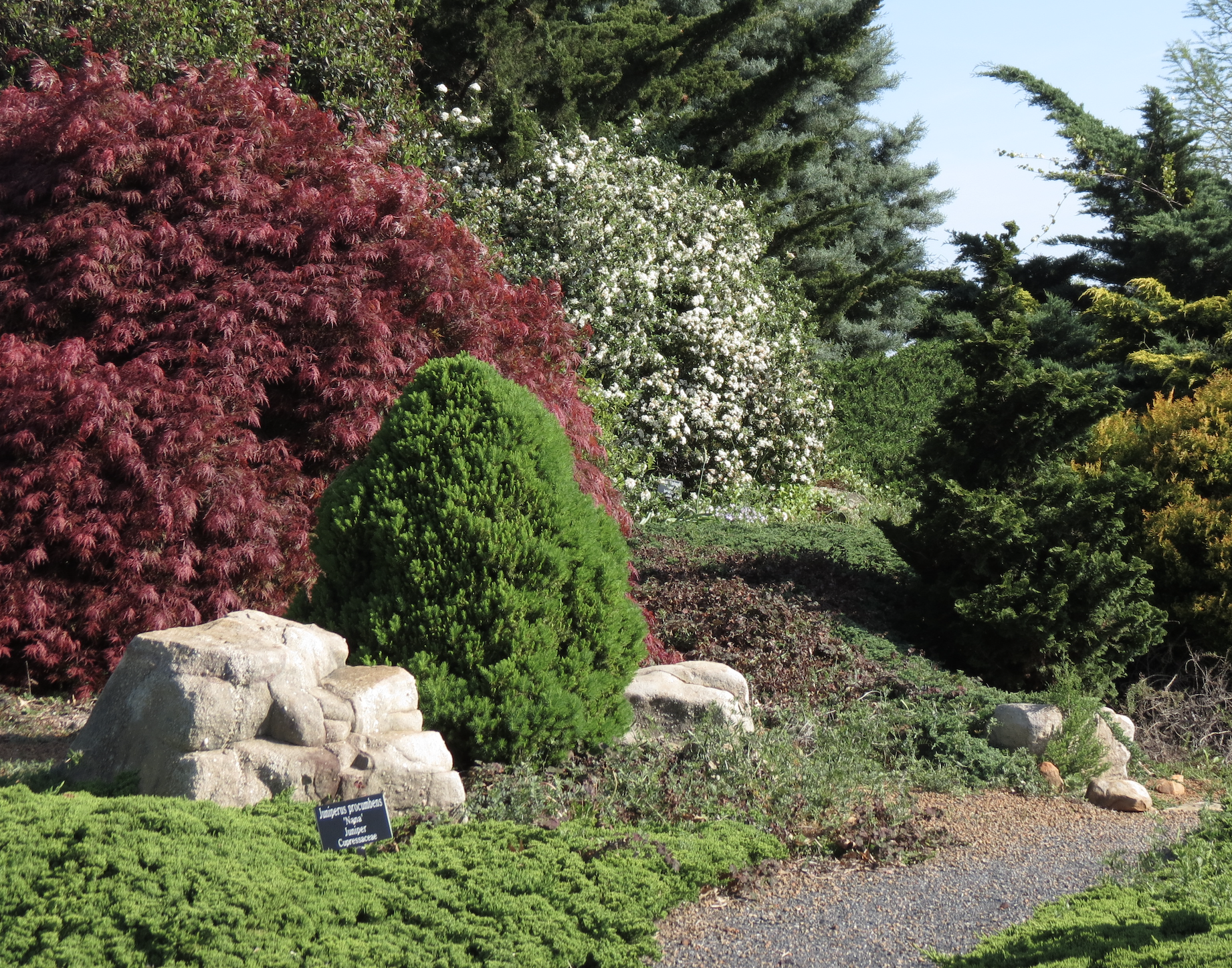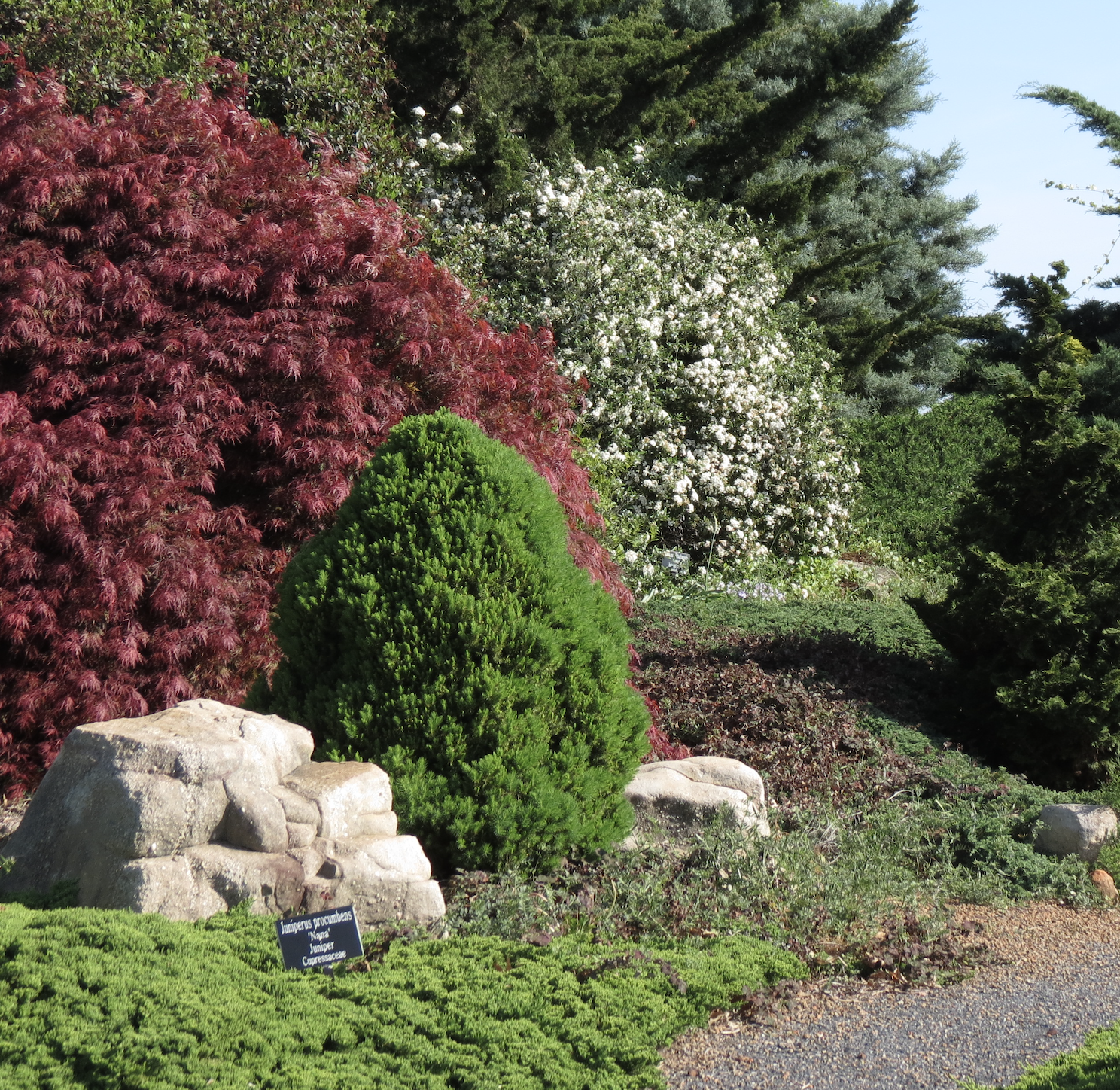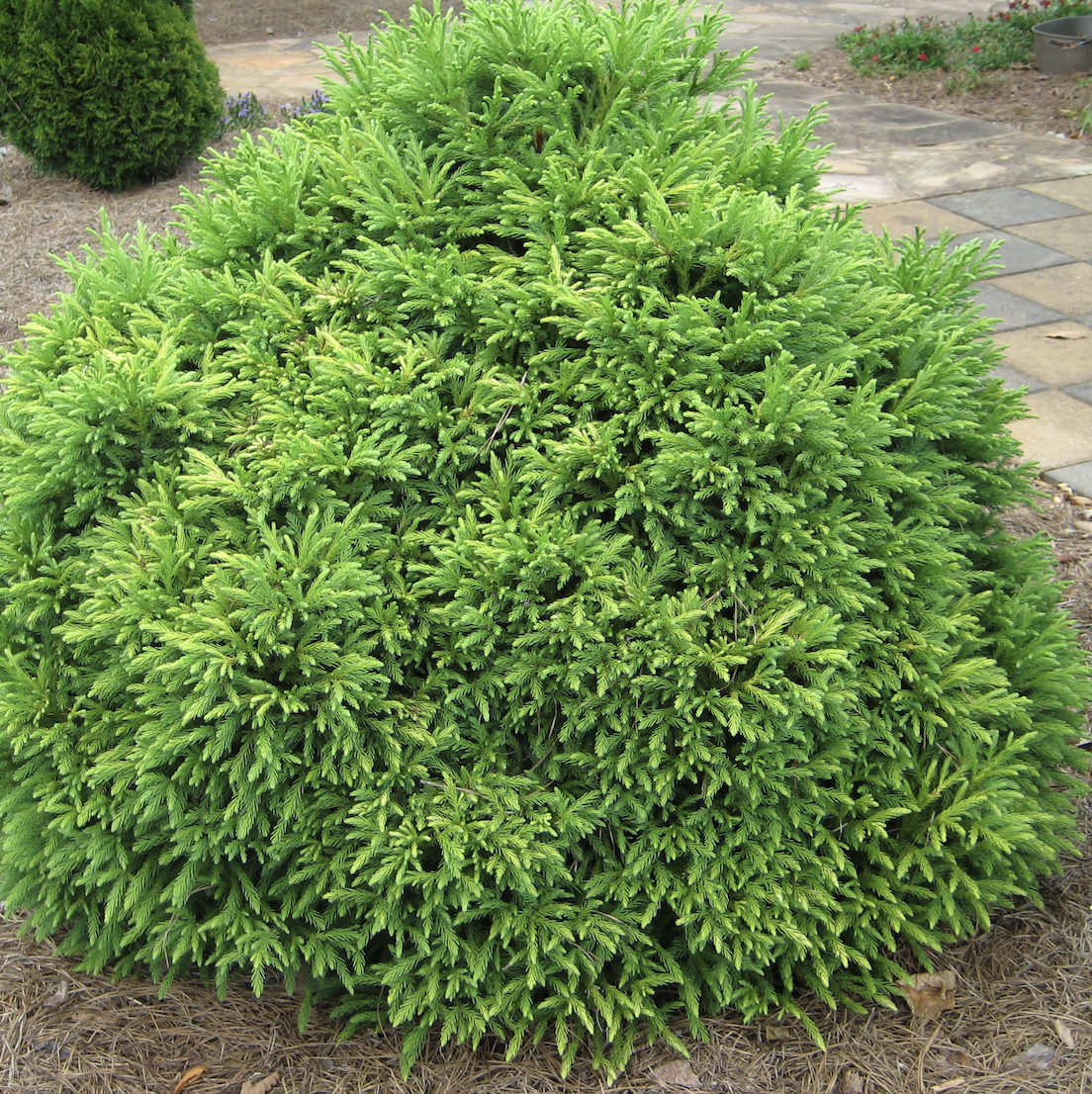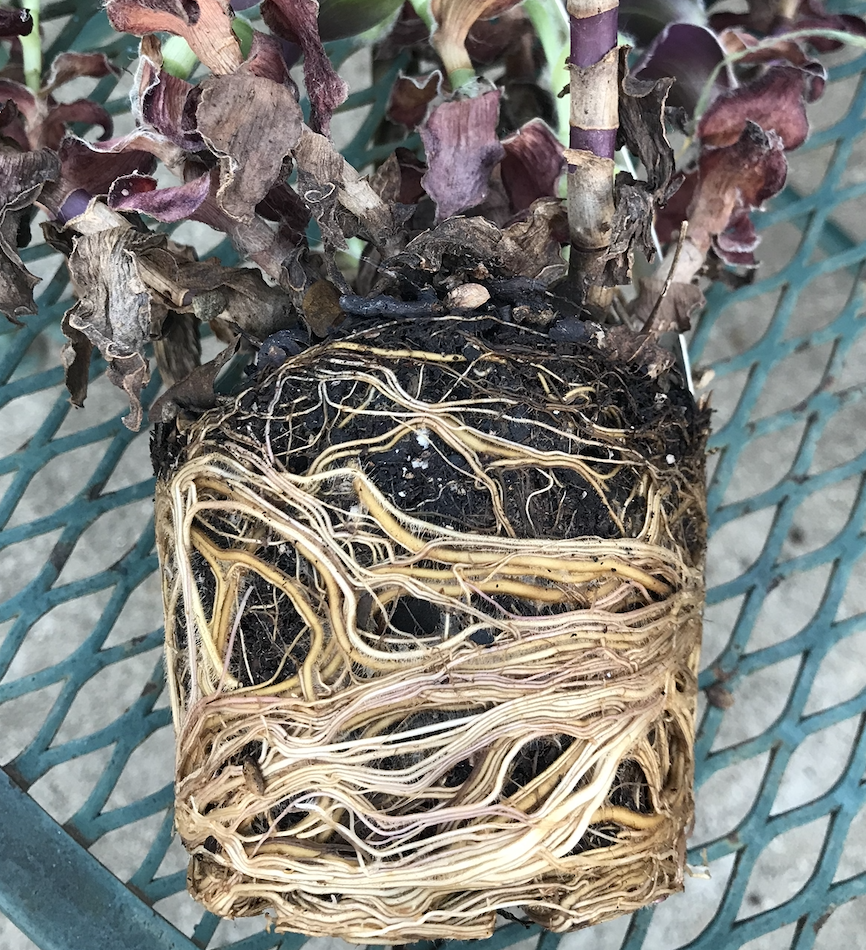Do you have a small landscape, but want to add shrubs that will not overgrow the space? It is important to select plants that are suitable for the space and visually appealing.
Plants are primarily selected for their aesthetic beauty, such as outstanding foliage, attractive flowers, unique bark, brightly colored fruit, plant form or branching habit. Plants can be also selected for their ability to attract wildlife and support pollinators. Fragrant flowers, flowers with particular color and shape combinations, edible fruit and dense branching for nesting sites are likely considerations to attract birds, bees and butterflies.
When selecting plants for your space, take your time to fully evaluate the space and select plants that will both thrive and provide you with powerful visual stimuli.
Finding space and place
Before selecting plants, evaluate the space for environmental conditions and soil fertility. You will need to know whether you are looking for plants that will do well in full sun or shade. You may have a space that stays wet or dry. Ensuring that you have the proper environmental conditions for new plantings will increase plant survival and reduce plant problems. It would also be wise to get a soil test completed to make sure that, nutritionally speaking, plants will have the opportunity to thrive in your space.
Evergreen shrubs provide full foliage throughout the year and are useful for defining spaces and providing a background for other features and plants. Small- and intermediate-sized evergreens can be used as ornaments, as single specimens or as groups of plants. They are frequently used as foundation plantings, adorning the front of the house and concealing foundation lines.
Small evergreens can be used near the house or a path where they can be observed up close. These plants accent areas near steps, garden gates or patio entrances to soften harsh edges and provide a welcoming atmosphere. Small shrubs with contrasting or variegated foliage or showy flowers show up beautifully against a background of green foliage plants (foundation plantings) for many buildings and homes. Many small shrubs are planted in attractive pots and combined with other plants for spectacular accents.
Deciduous shrubs — those that lose their leaves in the fall — provide the garden with vivid reflections of the seasons. They have a sequence of flowers, foliage, fruit and often vibrant fall colors. Their overall appearance changes dramatically from one season to the next. The continual progression ensures constant change and continuing interest in the landscape.
Finding plants that provide visual appeal without overgrowing available space is important. Otherwise, frequent pruning is required to keep plants within bounds and to prevent them from crowding other plantings. Many species have multiple cultivars available that offer a variety of mature heights and widths. When making plant purchases, choose plants that are properly labeled with genus, species and cultivar. Remember that variation in size, form and color can be observed in plants of the same genus and species. A cultivar can make all the difference in whether or not a plant is appropriate for your site.
A healthy start
Regardless of plants selected, start with healthy plants to encourage rapid establishment. A typical landscape shrub is available in a 3-gallon plant pot, though it is not uncommon to see 1-gallon or 5-gallon sizes. A soilless growing media is used in place of mineral soil, making the plants easy to handle and transport. Great selections of container-grown plants are available year round and can be added to your space at any time.
Young plants should exhibit vigorous growth, dark green foliage and stout twigs. Plants should be free of mechanical injuries, like broken branches, crushed foliage or scarred stems. Select plants that are well-branched and have maintained their lower branches.
When selecting plants, check the roots to make sure that they are not diseased. A healthy root system is important on young plants as it provides the primary means for rapid establishment and good plant growth at the new site. The root system should have active white root tips and be large enough to support the plant top. Make sure plants are not pot-bound — roots should be well dispersed in the container with room to grow. Pot-bound plants have roots that are matted thickly and which circle the pot. These are more difficult to establish and may develop girdling roots that will shorten the life of the plant.
Keep the roots moist when installing plants. Until the plant roots in and establishes itself, the soilless media in containers can dry quickly and the plant can wilt even though the surrounding soil is still moist. Once plants become established, they can withstand some periods of drought but may need supplemental water in prolonged hot and dry weather.
Some plants will need supplemental water several times a week during the summer. Having a small percentage of these plants and clustering them together closer to the house or water source is an example of water-smart landscaping. For more information, be sure to read University of Georgia Cooperative Extension Bulletin 1444, Water-wise Landscape Guide for the Georgia Piedmont at extension.uga.edu/publications.
Variety recommendations
Choosing healthy young plants for the landscape completes the plant selection process. Small shrubs are typically 5 feet or less in height and width. To assist with decisions, the following list offers a few suggestions for small shrubs:
- Kaleidiscope abelia (Abelia ‘Kaleidiscope’) is 3 feet in height and width and requires full sun. This semi-evergreen, rounded shrub has yellow-gold foliage and is sun and heat-tolerant. White flowers appear all summer.
- Spreading plum yew (Cephalotaxus harringtonia) ‘Prostrata’ is 2- to 4-feet high and wide and needs shade to part sun. This dark-green, needle-like evergreen is attractive planted under trees.
- Japanese cedar (Cryptomeria japonica) 'Globosa Nana' is 4- to 5-feet in height and width and requires full sun. This shrub naturally keeps its rounded shape without any pruning. In dry spells, supplement with water to avoid plant damage.
- Mt. Airy fothergilla (Fothergilla gardenia) ‘Mt. Airy’ is 4- to 5-feet in height and width and needs sun to part shade. This deciduous shrub has many small, white, bottlebrush-like flowers in the spring and excellent foliage color in the fall.
- Creeping gardenia (Gardenia augusta) ‘Radicans’ is 18- to 24-inches in height and 4 inches in width, requiring sun to part shade. If you like gardenia fragrance, but need a low-spreading plant, this selection is for you! White, double flowers are 1 to 2 inches in diameter.
- Dwarf Chinese Fringeflower (Loropetalum chinense) ‘Purple Pixie’ stands 1- to 2-feet high and 2-to 4-feet wide. It needs full sun. This is a small version of the full-sized, popular burgundy-leaved fringe flower. It can be grown in containers or in flower beds.
- Dwarf Southern waxmyrtle (Myrica cerifera) 'Don's Dwarf' stands 3- to 5-feet high and wide and requires sun to part shade. This selection of native waxmyrtle is low-growing and tolerates infertile soils. Its leaves and plant shape can be damaged by low temperatures and snow load.
- David viburnum (Viburnum davidii) is 3- to 5-feet high and wide and needs full sun. Its foliage is a dark, blue-green color and has flower buds that emerge pink and turn to white.
For more information on which plants may be best suited to your site and needs, please check out University of Georgia Cooperative Extension Bulletin 625, Landscape Plants for Georgia, at extension.uga.edu/publications.










